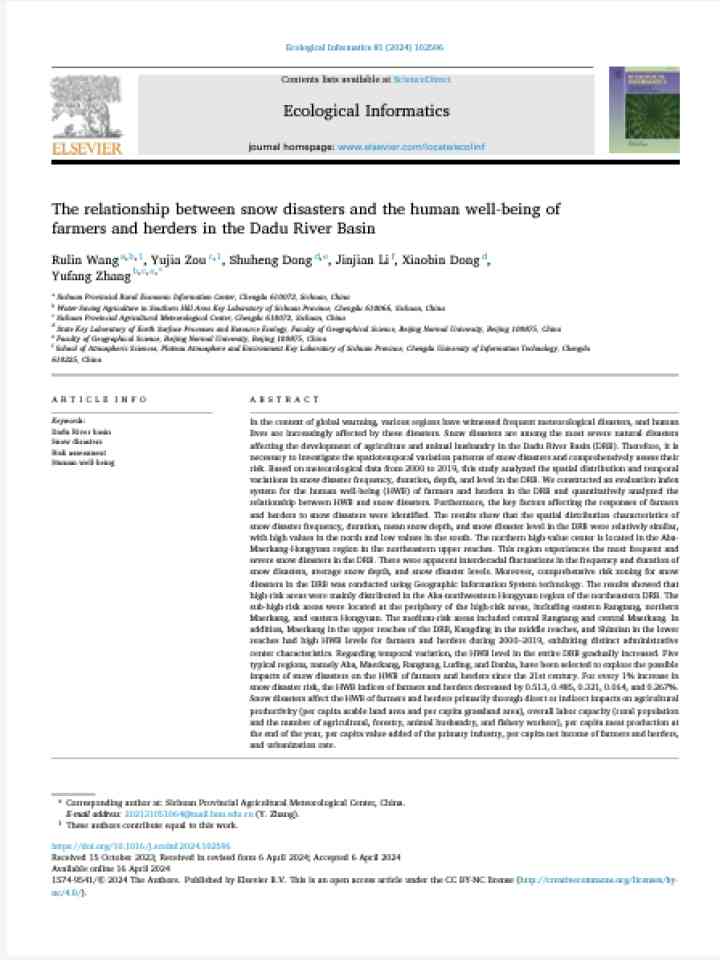The relationship between snow disasters and the human well-being of farmers and herders in the Dadu River Basin
The publication aims to study the patterns of snow disasters over time and across different areas in the Dadu River Basin (DRB) and to assess their risk levels. It also looks at how these snow disasters affect the well-being of farmers and herders in the region. The study uses weather data from 2000 to 2019 to examine how often snow disasters happen, how long they last, how deep the snow gets, and how severe the disasters are, as well as where they occur.
The results showed that the highest risk areas for snow disasters were mainly in the Aba-northwestern Hongyuan region in the northeastern part of the DRB. Areas with slightly lower risk, called sub-high-risk areas, were found around the high-risk regions, including eastern Rangtang, northern Maerkang, and eastern Hongyuan. Medium-risk areas included central Rangtang and central Maerkang. Additionally, Maerkang in the upper DRB, Kangding in the middle, and Shimian in the lower DRB had high levels of well-being for farmers and herders from 2000 to 2019, as these are key administrative centers.
Explore further
